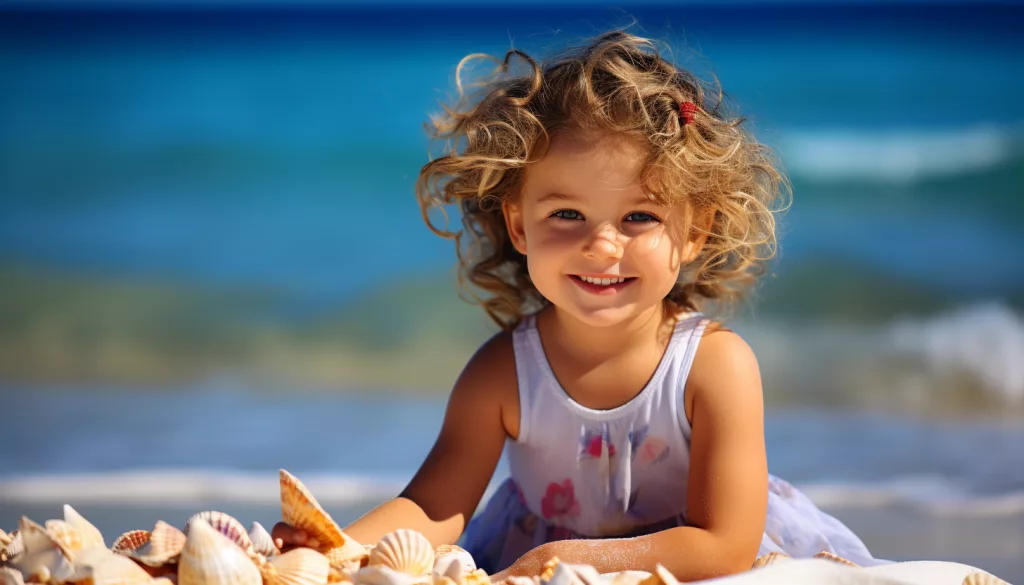- Bayahibe's Location and Transport Options
- Enthralling Activities in Bayahibe
- Exploring Bayahibe's Natural Wonders and Cultural Heritage
- A Culinary Voyage Through Bayahibe's Gastronomic Delights
- Savoring the Flavors of Dominican Cuisine
- Bayahibe's Dining Scene: A Melange of Delectable Options
- What is Bayahibe best known for?
- Are the beaches in Bayahibe safe for swimming?
- Can beginners participate in diving activities in Bayahibe?
- What kind of marine life can divers expect to see in Bayahibe?
- Is Bayahibe suitable for family vacations?
- What are the conservation efforts in place in Bayahibe?
- Are there any cultural activities or sites in Bayahibe?
- What types of accommodation are available in Bayahibe?
- When is the best time to visit Bayahibe?
- How does Bayahibe support sustainable tourism?
- How can visitors contribute to Bayahibe's conservation efforts?
- What local dishes should visitors try in Bayahibe?
- Is English widely spoken in Bayahibe?
- Can visitors take part in any conservation or community projects in Bayahibe?


Bayahibe’s Location and Transport Options
A Hidden Gem in the Dominican Republic
Bayahibe: Where is it? How to get there? What to do? Where to eat? In an era where the quest for untouched natural beauty becomes ever more relentless, Bayahibe emerges as a testament to nature’s enduring allure. Nestled on the southeastern coast of the Dominican Republic, this erstwhile fishing village has burgeoned into a sanctuary for travelers seeking solace from the frenetic pulse of modernity.
Getting to Bayahibe: An Abundance of Travel Options
To reach this captivating hamlet, one must first arrive at the Punta Cana International Airport, the nearest major air travel hub. From there, various transport options are available:
- Car Rental: Renting a vehicle affords visitors the freedom and flexibility to explore the island at their leisure. The journey from Punta Cana to Bayahibe takes approximately 1 hour and 15 minutes via the Autovía del Coral highway.
- Taxi: Taxis offer a convenient and comfortable means of travel. Be sure to negotiate the fare beforehand, as prices can vary.
- Shared Shuttle: For the budget-conscious traveler, shared shuttles present a cost-effective alternative. These services operate on a fixed schedule and can be booked in advance.
- Private Transfer: For an elevated experience, consider hiring a private transfer service, which can be tailored to your specific needs and preferences.
Enthralling Activities in Bayahibe
A Vast Array of Aquatic Excursions
Bayahibe’s crystal-clear waters and vibrant marine life make it a premier destination for water enthusiasts. Dive into the following activities:
- Scuba Diving: Explore the kaleidoscopic underwater realm of Bayahibe’s numerous dive sites, including the St. George and Atlantic Princess shipwrecks.
- Snorkeling: Immerse yourself in the mesmerizing world of coral reefs and colorful fish by embarking on a snorkeling excursion.
- Sailing: Glide across the azure waters aboard a catamaran or sailboat, basking in the warm Caribbean sun and gentle sea breeze.
- Fishing: Reel in a memorable experience by participating in a deep-sea fishing expedition, where the chance to catch marlin, tuna, and dorado awaits.
Excursions to Enchanting Islands
Venture beyond Bayahibe’s shores to discover the sublime beauty of nearby islands:
- Saona Island: A protected nature reserve, Saona Island boasts pristine beaches, lush mangroves, and a profusion of wildlife. The island can be reached by speedboat or catamaran.
- Catalina Island: This uninhabited island offers a tranquil retreat for visitors seeking solace in nature. Spend the day snorkeling, scuba diving, or simply lounging on the powdery sands.
Exploring Bayahibe’s Natural Wonders and Cultural Heritage


Discovering Bayahibe’s Flora and Fauna
Bayahibe’s verdant landscapes and diverse ecosystems provide ample opportunities for nature enthusiasts to indulge in their passion:
- Cotubanamá National Park: Formerly known as East National Park, Cotubanamá National Park is a treasure trove of biodiversity, encompassing a vast expanse of subtropical forest, mangroves, and marine habitats. Hike along the park’s trails to encounter endemic flora and fauna, including the Bayahibe Rose, an emblematic flower native to the region.
- Birdwatching: Bayahibe’s coastal wetlands and lush forests serve as a haven for an array of avian species. Grab your binoculars and embark on a birdwatching expedition, keeping an eye out for herons, egrets, and the endemic Hispaniolan parrot.
Immersing in Bayahibe’s Rich Culture and History
Experience the essence of Bayahibe’s cultural heritage through these engaging activities:
- Dominican Cooking Class: Delve into the flavorful world of Dominican cuisine by participating in a hands-on cooking class. Learn to prepare traditional dishes, such as mangu and sancocho, under the guidance of a local chef.
- Cultural Tours: Join a guided tour to gain insights into the history, traditions, and customs of Bayahibe and the Dominican Republic. Visit landmarks like the Cueva de las Maravillas, a subterranean cavern adorned with ancient Taino petroglyphs and pictographs.
- Festivals and Celebrations: Time your visit to coincide with one of the region’s vibrant festivals, such as the annual Bayahibe Fishing Tournament or the Dominican Carnival, which showcase the local community’s spirited joie de vivre.
A Culinary Voyage Through Bayahibe’s Gastronomic Delights
Savoring the Flavors of Dominican Cuisine
In Bayahibe, gastronomes can embark on a culinary adventure that showcases the island’s delectable fusion of Spanish, African, and indigenous Taino influences. Delight your palate with these iconic dishes:
- La Bandera Dominicana: Translating to “The Dominican Flag,” this national dish consists of white rice, stewed beans, and a choice of meat, typically accompanied by a fresh garden salad and fried plantains.
- Chimichurri: Not to be confused with the Argentinean sauce, Dominican chimichurri is a succulent street food staple featuring a seasoned grilled beef patty served in a bun with a medley of toppings, such as cabbage, tomatoes, onions, and ketchup.
- Mofongo: A flavorful concoction of mashed green plantains mixed with garlic, pork cracklings, and broth, mofongo is a beloved Dominican classic that showcases the island’s African culinary heritage.
Bayahibe’s Dining Scene: A Melange of Delectable Options
From casual beachfront shacks to elegant fine-dining establishments, Bayahibe offers a diverse array of eateries to satiate even the most discerning gourmand:
- Saona Café: This charming eatery serves up a delightful fusion of Dominican and Mediterranean fare in a cozy, welcoming ambiance. Don’t miss their signature lobster dishes or the scrumptious seafood paella.
- Boca Marina: Perched on a picturesque wooden pier overlooking the Caribbean Sea, Boca Marina offers an idyllic setting for a romantic dinner. The menu features a tantalizing selection of fresh seafood, grilled meats, and succulent pasta dishes.
- La Cueva: A rustic, open-air establishment that exudes a laid-back, beachy vibe, La Cueva is the perfect spot to enjoy traditional Dominican cuisine and ice-cold Presidente beer while watching the sun dip below the horizon.
- Tracadero Restaurant: For a luxurious dining experience, Tracadero Restaurant, situated within the exclusive Tracadero Beach Resort, presents a sophisticated menu of international cuisine, accompanied by an extensive wine list and panoramic ocean views.
Bayahibe is more than a destination; it is a vibrant, living ecosystem, a crossroad of cultures, and a leader in sustainable tourism practices. For those seeking an escape to a locale that thrives on preserving its natural and cultural heritage while welcoming visitors with open arms, Bayahibe is a beacon of hope. Its beaches, waters, flora, and community spirit weave together to form an unforgettable tapestry of experiences.
Bayahibe remains a pristine gem within the Caribbean’s crown, offering a slice of paradise with a conscience. It’s a place where the natural world is not just a backdrop, but an integral part of the adventure. Whether it’s through the lens of a diver’s mask, the taste of local cuisine, or the embrace of its warm community, Bayahibe leaves an indelible mark on the heart of every traveler.
FAQs
What is Bayahibe best known for?
Bayahibe is renowned for its stunning, unspoiled beaches, rich marine life, excellent diving spots, including vibrant coral reefs and historic shipwrecks, and its dedication to ecological conservation. It is also celebrated for its diverse cultural heritage and commitment to sustainable tourism.
Are the beaches in Bayahibe safe for swimming?
Yes, the beaches in Bayahibe are safe for swimming. They are well-known for their calm, clear waters and have earned Blue Flag certifications, indicating high environmental and safety standards.
Can beginners participate in diving activities in Bayahibe?
Absolutely. Bayahibe offers diving experiences for all levels, including beginners. There are numerous dive shops that provide certification courses and guided dives, ensuring a safe and enjoyable experience for newcomers.
What kind of marine life can divers expect to see in Bayahibe?
Divers in Bayahibe can expect to see a diverse range of marine life, including various species of tropical fish, sea turtles, rays, and sometimes even dolphins. The coral reefs themselves are teeming with life and provide a habitat for many small marine creatures.
Is Bayahibe suitable for family vacations?
Bayahibe is very family-friendly, with beaches that have gentle slopes into the water and numerous activities suitable for all ages. The village offers a range of accommodations and dining options that cater to families.
What are the conservation efforts in place in Bayahibe?
Bayahibe is involved in several conservation efforts, such as protecting the endangered Bayahibe Rose, maintaining the health of coral reefs, and ensuring sustainable fishing practices. The village also promotes eco-friendly tourism to preserve its natural environment.
Are there any cultural activities or sites in Bayahibe?
Yes, Bayahibe’s cultural activities include local music and dance, art exhibitions, and culinary experiences that showcase its rich heritage. The village celebrates its Taíno roots, European influences, and Afro-Caribbean culture, often culminating in vibrant local festivals.
What types of accommodation are available in Bayahibe?
Bayahibe offers a range of accommodation options, from eco-lodges and boutique hotels to all-inclusive resorts. Many places emphasize sustainable practices to align with the village’s commitment to environmental stewardship.
When is the best time to visit Bayahibe?
The best time to visit Bayahibe is from December to April when the weather is dry and sunny. However, the village enjoys a warm, tropical climate year-round, making it a great destination at any time.
How does Bayahibe support sustainable tourism?
Bayahibe supports sustainable tourism through eco-friendly accommodations, promoting conservation activities, encouraging visitors to participate in environmentally responsible practices, and by investing in community-based tourism initiatives that benefit local inhabitants.
How can visitors contribute to Bayahibe’s conservation efforts?
Visitors can contribute by choosing eco-friendly tour operators, respecting local wildlife and habitats while diving or snorkeling, supporting local businesses, and by participating in environmental education programs.
What local dishes should visitors try in Bayahibe?
Visitors should try fresh seafood dishes, traditional Dominican fare like Sancocho (a hearty stew), Pescado con Coco (fish with coconut sauce), and locally grown tropical fruits. Creole-inspired cuisine is also a must-try in Bayahibe.
Is English widely spoken in Bayahibe?
While Spanish is the primary language, English is widely spoken within the tourism industry in Bayahibe, including hotels, restaurants, and tour operators.
Can visitors take part in any conservation or community projects in Bayahibe?
Yes, there are opportunities for visitors to engage in conservation and community projects. This can range from beach clean-ups to educational programs with local schools. Tourists are encouraged to contact local organizations for more information on current initiatives.
